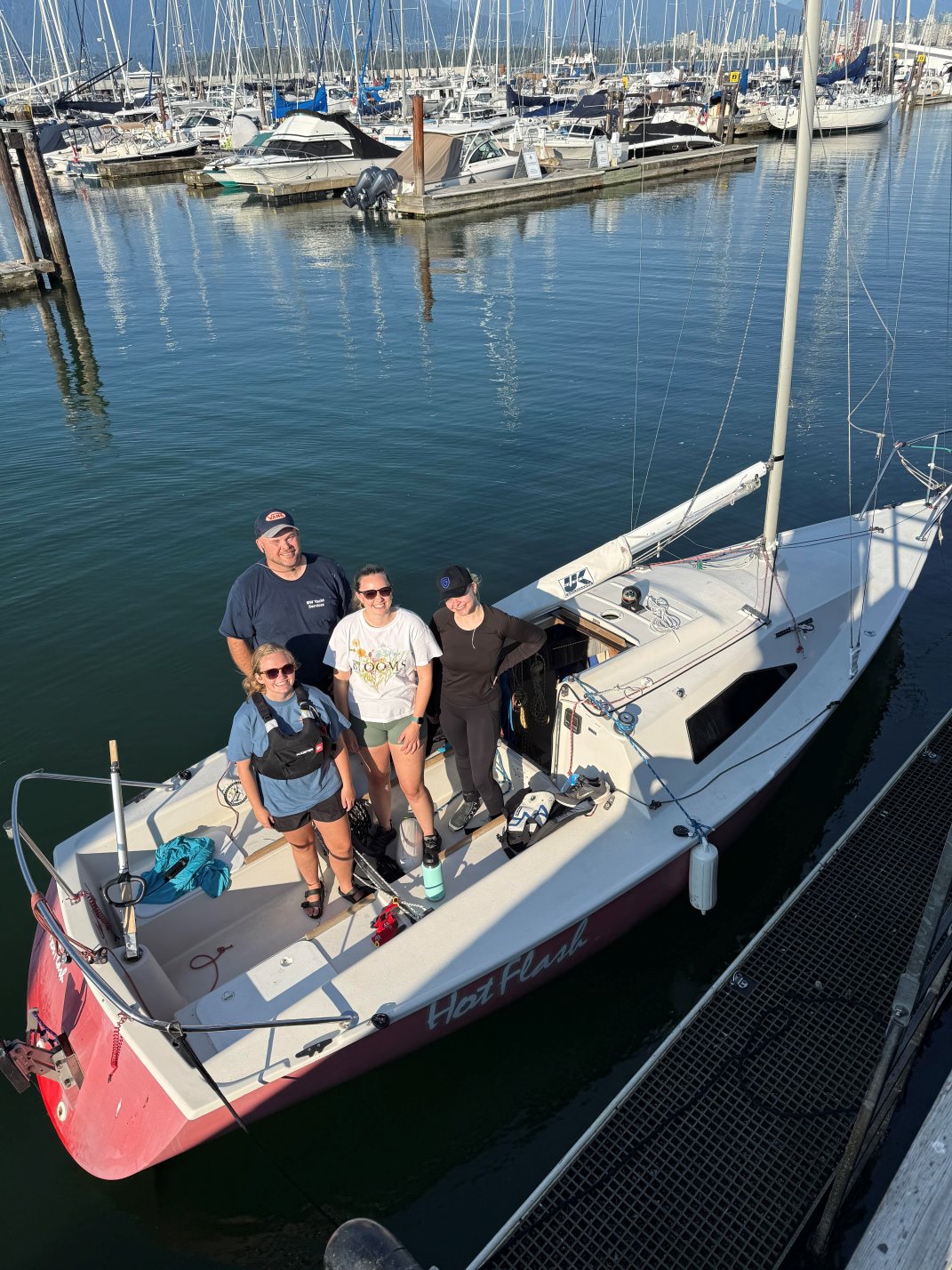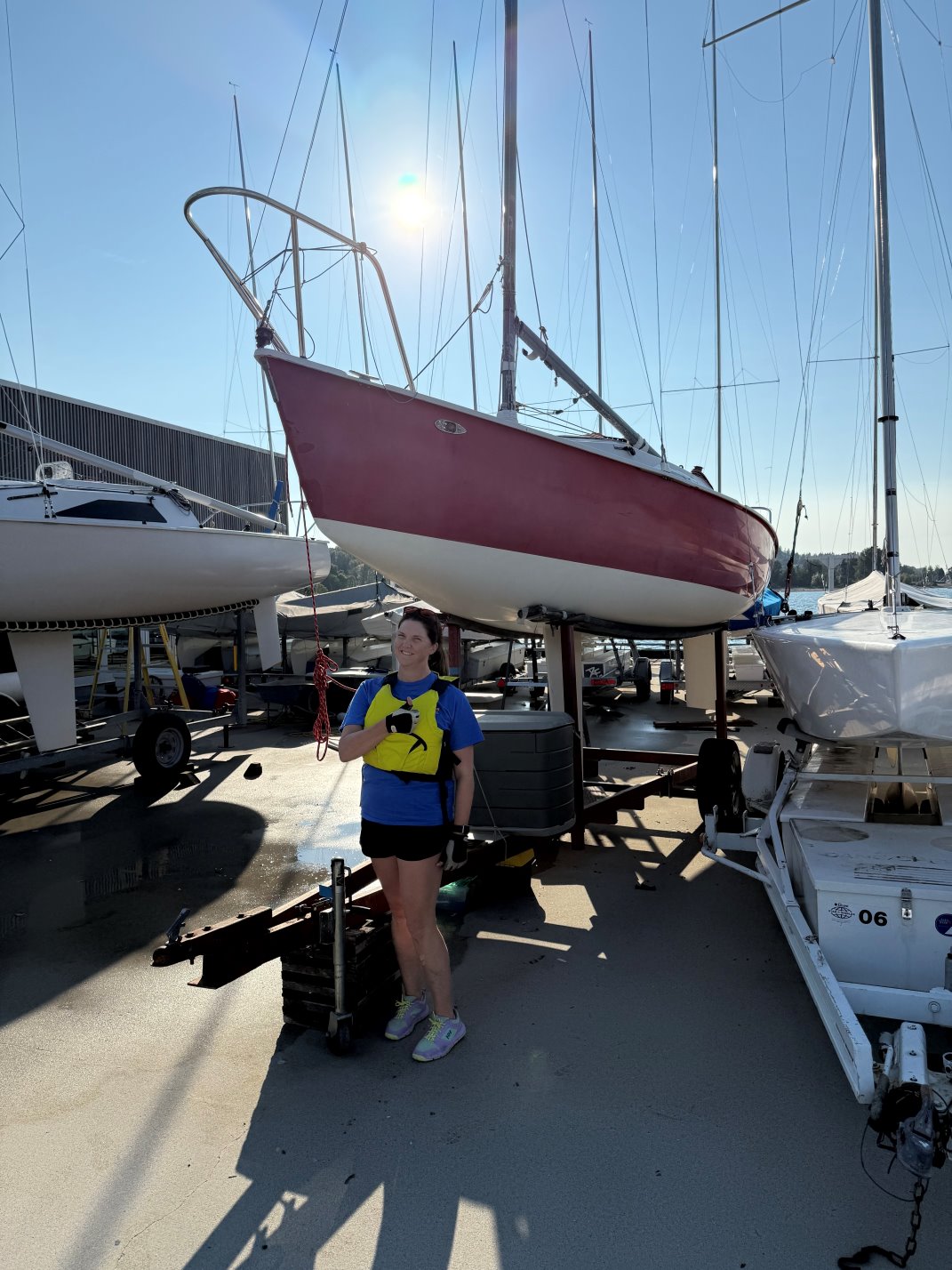8th Transaction of 2025 - Ken Hays on Round-Up, #19
Ken plans on building up a small fleet of 242’s in Sequim over time. He has been sailing since he was 7; racing since junior high school; in Lasers, Finn’s, FJ’s, Tasers, Lightning’s and assorted small keel boats. He bought and raced a 36’ Beneteau to Hawaii in the Vic-Maui Race; basically a lifetime of competitive racing. He also won the SYC Grand Prix in 1993.
With a white color, Round-Up has the following attributes:
- Repainted deck and hull
- Bottom paint applied
- Comes with a road trailer
- The boom is a short, Oregon, version and needs to be replaced with a Class-standard boom (done, courtesy of Ken Machtley)
- The deck layout is non-standard and needs a bit of a re-jig to meet Class Rules
- Needs a forestay tang - easily fabricated by Pro-Tech in North Vancouver
- Needs G10 rods under the gunnels for the shrouds to be supported - obtainable via several vendors on the Buy-Sell page
- Did not have an outboard engine, but new 2.5hp’s are not expensive
- Does not have any racing sails - there are used ones available on the market
- The boat needs a 2016 Measurement Certificate but has been partially reviewed by Ken Machtley and Michael Clements (on Sept 4 a Measurement Cert was mostly completed including weighing by Ken Machtley)

7th Transaction of 2025 - Brett Wilson & Team on Hot Flash (now named BEaR, as in "Brett, Eleanor and Rebecca), #201
SOLD - 7th boat of 2025 to change hands and the 85th in 8.7 years - Vancouver, BC (listed July 24 for $13,000, offer accepted August 31): Hot Flash, hull #201 (now called BEaR). The boat was purchased by Brett Wilson & Team (Eleanor Hawkins, Rebecca Harper) of RVYC and sold by Michael Clements who trailered it down from Alberta and lent it out to Julie Coll from LA for the recent NA's. The boat measures in perfectly, is 41 pounds underweight, and came with a very good Highliner road trailer, a 2.5hp long-shaft Yamaha outboard, a 15-year-old Ballenger mast in excellent condition, and some good usable sails other than the jib (2022 Ullman main in very good condition; 2011 main in OK condition, 2015 Quantum spin in good condition, 2010 Ullman in OK condition). The bottom has VC Onshore and many of the boat systems have been tweaked to a race-ready level by the owner, who wanted the boat to be bought by an active racer in the Class. It has a 2016 Measurement Certificate and partially-completed Sail Register. It will stay at Royal Vancouver Yacht Club.
Brett, Rebecca, Eleanor, and Kendra Penner were the 10th Place Team in the 2025 NA’s. They borrowed Showtime from Grant Atkins for the event. Brett is a former Star and Elliot 6 Meter sailor, and his core Team of Eleanor and Rebecca raced Elliots, Dragons, and also participated in a J-70 in the Helga Cup in Hamburg, Germany. They will campaign the boat hard in the coming years, and are already planning on the Canadian Championships at Gibsons next mid-July followed by the annual Cow Bay Regatta.
Welcome to the Regional Fleet!
L-R: Kendra, Brett, Rebecca, Eleanor
6th Transaction of 2025 - Erica Crilly & Scarlett
SOLD - 6th boat of 2025 to change hands and the 84th in 8.5 years - Vancouver, BC, in April/May, 2025: Scarlett - Hull 57 (unlisted transaction): to Erica Crilly from Cedric Carter. The boat has a yard dolly and a 2016 Measurement Certificate and is a past NA's winning boat. It will stay at Royal Vancouver Yacht Club.
Welcome to the Regional Fleet, Erica!
Fleet One Association Article Count: 1
Page 5 of 72


